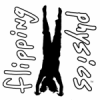Search the Community
Showing results for tags 'Feet'.
-
I've been extremely curious on how much Physics Education professional dart players have on shooting? It's quite impressive to throw 3 darts in such a small group repeatedly without any fixed sights. If you have any Physics, mathematics, knowledge,suggestion to this either by text, video, illustration would you be so kind to share? Im looking for anything and everything to do with start to finish with throwing and standing also throwing a Steel Tip Dart (with a flight and its uses along with balance and it's shaft) The functions of each piece of the process compared to it's closest similarities. Thank You So Much.
-
Name: Introduction to Base Dimensions and Your Friends Category: Introductory Concepts Date Added: 20 May 2014 - 01:41 PM Submitter: Flipping Physics Short Description: Introduction to Base Dimensions and Your Friends Introduction to SI (Système international d'unités or Metric Units) and English (or Imperial) units. Dimensions are your Friend. Content Times: 0:15 Dimensions are your Friends! 2:11 Base Dimensions 2:43 The Table of Base Dimensions View Video
-
- Base
- Dimensions
- (and 6 more)
-

Why humans are the best distance runners
running_dry posted a blog entry in Tired and a little dehydrated
In my last post I highlighted some of the incredible things that distance runners are able to do, including very long runs at altitude (lower oxygen) and in extreme conditions. But what allows these people to do these kinds of things? The short answer is training. With enough training almost anyone (for the most part excluding the very elderly) could finish an ultra marathon. But why is this? The answer lies in the fact that humans are better adapted to run for long distances than any other animal on the planet. First of all, humans are bipedal meaning that we move around on two feet, and while other primates are able to walk with two limbs humans are the only primates who walk exclusively with only two legs. Bipedalism in itself isn't incredibly unique as other mammals such as macropods (kangaroos, wallabies...) and large birds like ostriches and emus rely on bipedal movement as well, however humans have other adaptations to make bipedalism more efficient. You may not realize it but the human foot is a very intricate mechanical structure containing 26 bones, 33 joints and over 100 muscles and tendons. While running the foot, specifically the arch, acts as a spring which absorbs and returns force to the ground which is done as follows: the foot lands on the outside of the forefoot and pronates inward, stretching muscles which absorb and store force. The foot rocks forward while it pronates so that by the time the front pad of the foot is flat on the ground the toes are pushing off the ground with the energy stored in the foot's muscles. In addition to the feet the rest of the muscles act as springs which store energy from the foot strike to be used as propulsion for that step. As a result, running is basically a process of converting kinetic energy (foot strike) into potential energy (stretched muscles) and back into kinetic energy (push off). Of course as in any system, energy is lost as heat thus cells must break down glucose during anaerobic and aerobic respiration to create ATP for your muscles to use to create additional energy to put into the ground.-
- kangaroos
- kinetic energy
-
(and 4 more)
Tagged with:
Terms of Use
The pages of APlusPhysics.com, Physics in Action podcasts, and other online media at this site are made available as a service to physics students, instructors, and others. Their use is encouraged and is free of charge. Teachers who wish to use materials either in a classroom demonstration format or as part of an interactive activity/lesson are granted permission (and encouraged) to do so. Linking to information on this site is allowed and encouraged, but content from APlusPhysics may not be made available elsewhere on the Internet without the author's written permission.
Copyright Notice
APlusPhysics.com, Silly Beagle Productions and Physics In Action materials are copyright protected and the author restricts their use to online usage through a live internet connection. Any downloading of files to other storage devices (hard drives, web servers, school servers, CDs, etc.) with the exception of Physics In Action podcast episodes is prohibited. The use of images, text and animations in other projects (including non-profit endeavors) is also prohibited. Requests for permission to use such material on other projects may be submitted in writing to info@aplusphysics.com. Licensing of the content of APlusPhysics.com for other uses may be considered in the future.

